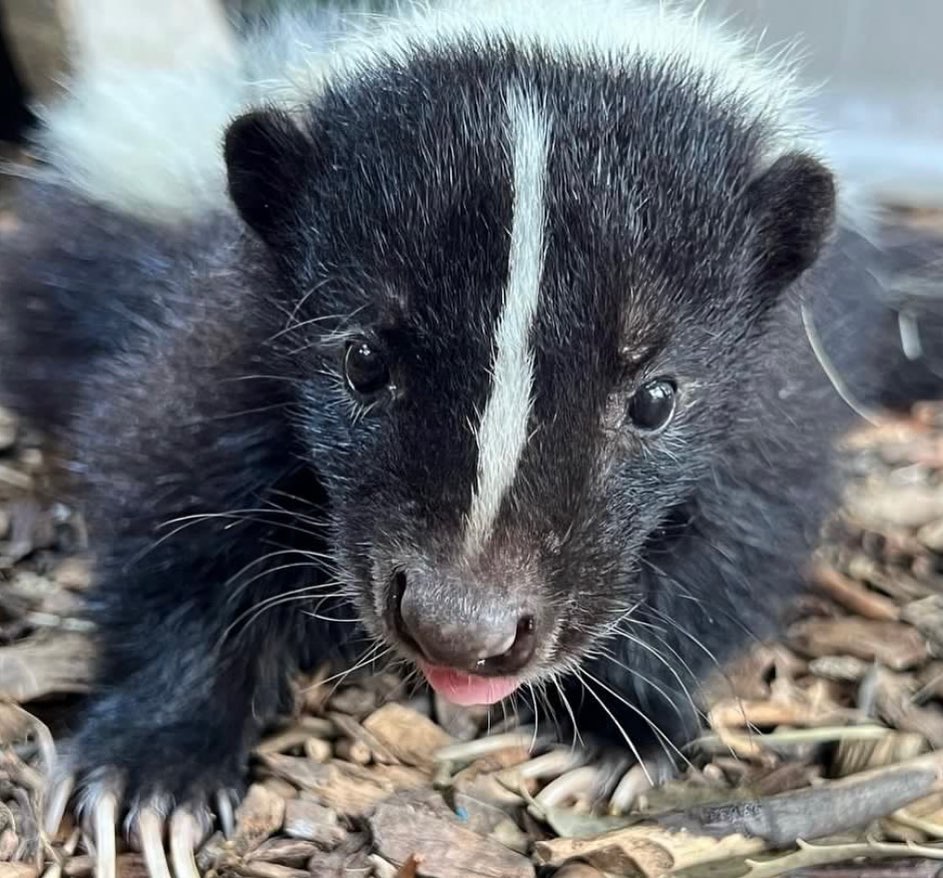Summary:
1. Striped skunks are fascinating creatures that have unique living habits.
2. They prefer underground dens in colder winter climates.
3. Despite popular belief, they do not truly hibernate but experience periods of inactivity during winter.
4. Striped skunks are native to North America and can be found in various habitats.
5. Their distinctive black and white fur and ability to spray a noxious odor for defense make them captivating creatures.
Welcome to another tongue-out Tuesday action featuring the adorable Beetlejuice, also known as Beetle, the striped skunk! This article will delve into striped skunks’ intriguing and unique aspects, shedding light on their living habits, preferred habitats, and fascinating defense mechanisms.
One of the most intriguing aspects of striped skunks is their housing choice. These remarkable creatures typically seek out abandoned dens of other mammals or find shelter in hollowed logs, brush piles, or even underneath buildings. This adaptable behavior allows them to thrive in various environments and habitats throughout North America.
In the colder winter, striped skunks exhibit interesting behavior that sets them apart from other animals. Although they are not true hibernators, they experience extended periods of inactivity during this time. Instead of deep sleep like some mammals, they go into a state of torpor. This state involves a reduction in their metabolic rate, heart rate, and body temperature, enabling them to conserve energy and survive the harsh winter conditions.
While striped skunks may prefer underground dens during winter, they are not limited to this habitat type. They can also be found in prairies, open fields, forests, and suburban areas, making them incredibly versatile. Their adaptability to different environments is a testament to their survival skills and resourcefulness.
Let’s talk about the iconic black and white fur that distinguishes striped skunks from other creatures. This striking coloration serves as a warning to potential predators. It acts as a visual cue, signaling the presence of potent chemical defenses. Yes, we’re talking about that infamous skunk spray!
When threatened or cornered, striped skunks can spray a noxious odor that is a powerful deterrent. Special glands near the anus produce this aromatic spray containing a sulfur-based compound mixture. It is an effective defense mechanism that can repel even the most persistent predator, ensuring the skunk’s safety.
While the skunk spray is primarily used for self-defense, skunks also employ other fascinating behaviors to communicate with one another. They use a variety of vocalizations, such as chirps, growls, and hisses, to convey messages to their peers. Additionally, they perform intriguing stomping and tail-flagging displays to establish dominance or attract a mate. These unique behaviors make encounters with striped skunks a truly captivating experience.
DStripedskunks are generally docile despite their formidable defenses and prefer to avoid confrontations. They are primarily nocturnal, meaning they are most active at night. This behavior helps them avoid potential predators and increases their chances of finding food, mainly insects, small mammals, birds, and fruits and vegetables.
In conclusion, striped skunks are extraordinary creatures that offer a wealth of fascinating features. From their choice of housing to their winter behavior and impressive defense mechanism, they have adapted to thrive in various habitats throughout North America. Their iconic black and white fur and distinctive ability to spray a potent odor serve as reminders of their incredible survival skills. So, the next time you encounter a striped skunk, remember to appreciate its unique qualities and important role in the natural world.
*****
Source Description
A little tongue-out Tuesday action is coming to you from Beetlejuice, aka Beetle, the striped skunk 😛
Striped skunks typically live in abandoned dens of other mammals or find a home in hollowed logs, brush piles or underneath buildings. North American natives prefer underground dens in colder winter climates. While not truly hibernating, striped skunks experience extended inactivity during winter.


